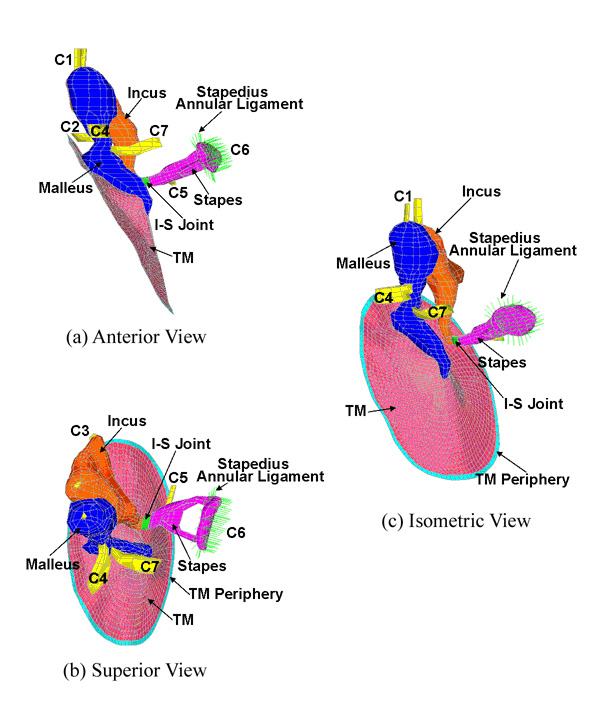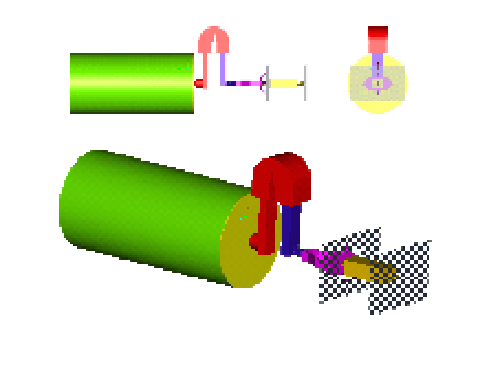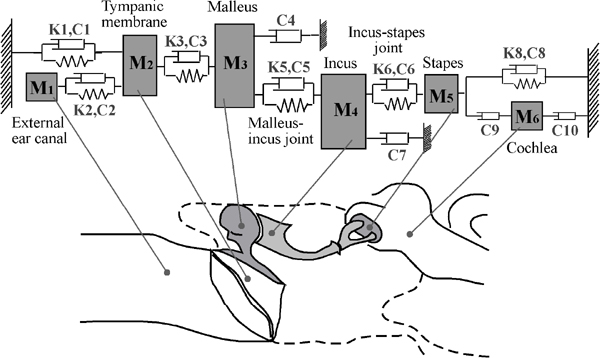|
1.Transfer Function of Human Middle Ear Measured in Cadaver Bone |
|
Laser experiment on human temporal bone
|
|
|
|
2.Finite Element (FE) Modeling of the Human Middle Ear |
|
Finite element method serves as an excellent tool for understanding the sound transmission mechanism of the ear. The 3-D CAD model of human middle ear is constructed based on histological section images of individual cadaver temporal bone. The CAD model is then meshed into finite element model which includes the tympanic membrane, ossicles (malleus, incus and stapes), attached ligaments and muscles, and cochlea. Finally, the FE model is validated using the temporal bone experimental data measured by laser interferometers. The FE model can be potentially used for various clinical-related applications and implantable devices development. |
|
3-D finite element model of the human right middle ear with attached ligaments and muscle tendons.
|
|
3. Physicl Model of Human Ear |
|
The physical model of human ear is under investigation in the lab. The model will consist of acoustic coupling of external ear canal-eardrum, middle ear suspension system, and cochlea-oval widow coupling. These two figures show computer simulation created based on a baseline finite element model of the physical model.
|
|
|
|
4. Lamped Model of Human Ear |
A lumped model consisting of 6 masses connected by several pairs of spring and dashpot is proposed for mechanical analysis of the ear. All unknown parameters are identified based on the governing equations of the system and determined through optimization and parameter-perturbation process.This lumped model serves as the starting stage for understanding the relationship between the middle ear components for sound transmission. The model will be used for developing the physical model of the ear.
|
|
|



